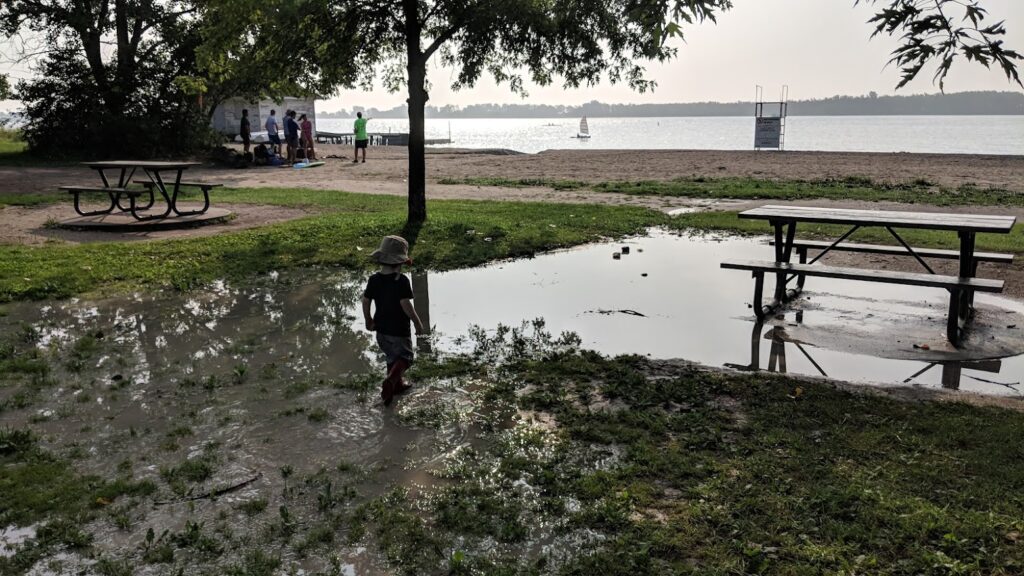How to fix standing water on your property

We often get questions from clients about standing water on their property, especially in the spring or falling unusually heavy rainfalls. In some cases, standing water can have serious consequences for your home – in other cases, it’s more of a nuisance, and will require some thought as to whether or not its worth resolving. In most cases, treating standing water can be an expensive and time consuming process.
Is it always an issue? No. If you get some pooling in your lawn during the spring thaw and following extreme rain events, it’s probably not a serious issue. Standing water can be challenging and expensive to repair – when its causing property damage or when it stands for long period of time, it becomes something you should deal with.
Section 1: The Culprits Behind Standing Water
Identifying the sources of standing water is crucial for implementing effective solutions. Common causes include:
- Poor drainage systems: Inadequate drainage can lead to water pooling in low-lying areas of the property, creating a breeding ground for mosquitoes and other pests.
- Improper grading: Incorrect slope or grading around the house can result in water accumulating near the foundation, posing a threat to the structural integrity of the home.
- Clogged gutters: Leaves, debris, and other materials can obstruct gutters, preventing proper water flow and causing overflow onto the property.
Section 2: The Risks Associated with Standing Water
Standing water can bring about a range of problems that impact both the property and its residents. Some notable risks include:
- Structural damage: Prolonged exposure to standing water can compromise the foundation, leading to cracks, erosion, and other structural issues.
- Mosquito breeding: Stagnant water serves as a perfect breeding ground for mosquitoes, increasing the risk of mosquito-borne diseases and making the outdoor space less enjoyable.
- Landscape deterioration: Plants, grass, and other landscaping elements may suffer due to excess water, resulting in soil erosion, root rot, and the decline of the overall aesthetic appeal of the property.
Section 3: Solutions for Managing Standing Water
Addressing standing water requires a proactive approach to prevent potential issues. Consider the following solutions:
- Proper drainage systems: Install French drains, swales, or other drainage solutions to redirect water away from the property and prevent pooling.
- Grading and landscaping: Ensure proper grading to create a slope away from the foundation. Additionally, incorporate landscaping elements like rain gardens to absorb excess water.
- Gutter maintenance: Regularly clean gutters and downspouts to prevent clogs and ensure proper water flow away from the house.
- Rainwater harvesting: Consider implementing rain barrels or other rainwater harvesting systems to collect excess water for later use, minimizing the impact of standing water.
Conclusion:
Addressing standing water on residential properties is not just about maintaining a visually appealing landscape; it’s about safeguarding the structural integrity of the home and the well-being of its residents. By understanding the causes, risks, and implementing effective solutions, homeowners can create a harmonious environment that promotes both a healthy home and a thriving outdoor space.
Need help with standing water on your property? Our Installations Team can help.
